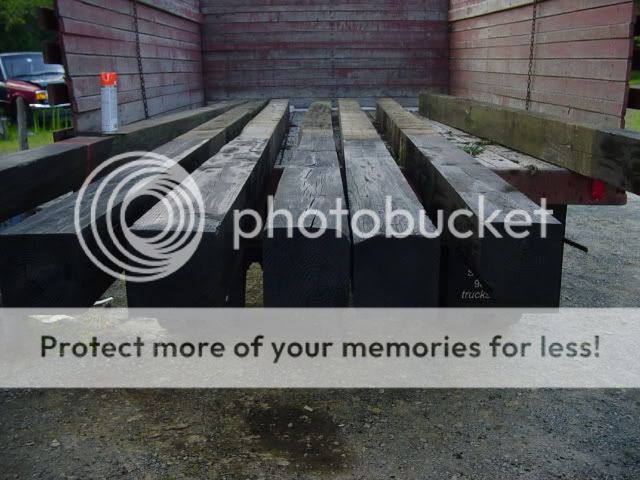I read the post below about landscape timbers. It made me think about the treated post in buildings. I have been lucky in what I have bought. There is a local building guy here that makes his own trusses/barn kits and he stocks most of the common lumber for a pole barn. I always bought my post from him as he was as cheap as Menard/Lowe's. He only keep the .6 treated post. (I am not really sure what that means) None of his post have rotted off.
Several of my friends have building that the lumber was supplied by Menard's/Lowes. They found out that many of the post are rotten just below the ground line. One friend checked his equipment shed(60x80)a few years ago. He dug down six inch beside a post and you could stick a screw driver clear through the post. It kind of worked out for him. He was wanting the shed higher so his combine would go in without folding the bin extension. So he jacked the whole shed up two feet and poured a concrete footer for the shed to set on. Every single post was rotten off below the ground.
It makes me wonder how many guys have a problem they don't even realize??? What made us check the post to start with was the high winds that hit out around Waterloo several years ago. Several guy's sheds blew over after the post broke off at the ground. There even have been some lawsuits over the issue.
So I am sure some of you know what the number mean. I just know I try to be careful when getting post to build with now.
Several of my friends have building that the lumber was supplied by Menard's/Lowes. They found out that many of the post are rotten just below the ground line. One friend checked his equipment shed(60x80)a few years ago. He dug down six inch beside a post and you could stick a screw driver clear through the post. It kind of worked out for him. He was wanting the shed higher so his combine would go in without folding the bin extension. So he jacked the whole shed up two feet and poured a concrete footer for the shed to set on. Every single post was rotten off below the ground.
It makes me wonder how many guys have a problem they don't even realize??? What made us check the post to start with was the high winds that hit out around Waterloo several years ago. Several guy's sheds blew over after the post broke off at the ground. There even have been some lawsuits over the issue.
So I am sure some of you know what the number mean. I just know I try to be careful when getting post to build with now.




